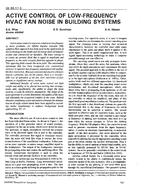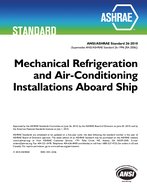Click here to purchase
Buildings consume approximately 40% of total energy consumption in the U.S., thus there is significant motivation to makebuildings more efficient. Existing studies have implemented a range of control strategies to save energy in typical commercialbuildings. However, academic buildings at universities can vary substantially from typical office buildings in their space use,occupancy patterns and energy use. This paper aims to evaluate the energy savings potential of implementing occupant-basedcontrol (OBC) for HVAC systems in typical academic buildings using the energy simulation engine EnergyPlus. A U.S. DOECommercial Building Prototype Model was modified to represent the typical characteristics and space use compositions ofacademic buildings based on the space type and functional use data collected from 8 U.S. universities. The occupancy scheduleswere then replaced with stochastic academic building-based occupancy schedules, developed from a prior study by the authors.Next, the baseline and proposed models were built, of which a fixed setpoint schedule and minimum outdoor air flowrate wereused for the baseline model. The proposed model resets the temperature schedule and minimum outdoor air flow schedulebased on the proposed occupancy schedules, following the recommendations of ASHRAE Standard 90.1-2019, and ASHARE62.1-2019. The results of this work provide typical academic building models with integrated occupancy schedules which canbe used to evaluate energy saving measures, and aid building designers and operators in making informed decisions in applyingappropriate control strategies to optimize building energy systems, as well as predict energy use and demand.
Citation: 2021 Virtual Conference Papers
Product Details
- Published:
- 2021
- Number of Pages:
- 9
- Units of Measure:
- Dual
- File Size:
- 1 file , 1.1 MB
- Product Code(s):
- D-VC-21-C019


